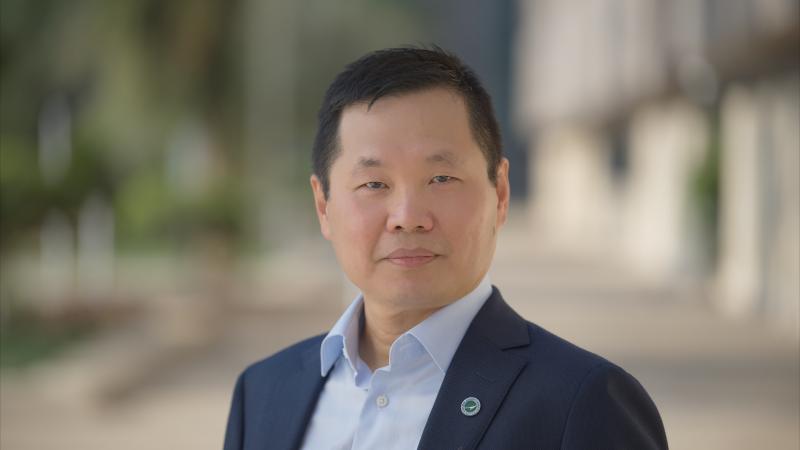Website
Ahmed Ben Slimane completed his Ph.D. in Electrical Engineering from King Abdullah University of Science and Technology (KAUST), Saudi Arabia, in 2014, where his work was focused on III-Nitride micro and nanostructures for flexible solid-state age lighting. M.S. in Electrical Engineering from Institut National Polytechnique de Grenoble (INPG), France, in 2009. B.E. in Electrical Engineering from Ecole Nationale Supérieure d'Electronique et de Radioélectricité de Grenoble (ENSERG), France, in 2007. Ahmed Ben Slimane received his master's degree in micro and nanotechnology for integrated Systems from Institut National Polytechnique de Grenoble (INPG), France, in 2009. During his master degree he has been in a program offered to nanotechnology students in Europe, he had the opportunity to study in different selective universities: Politecnico Di Torino, Italy, in 2007 and Ecole Polytechnique Fédérale de Lausanne (EPFL), Switzerland, in 2008; where he studied the technological process and Analog circuits. He received his Bachelor's degree in microelectronics and signal treatment from Ecole Nationale Supérieure d'Electronique et de Radioélectricité de Grenoble (ENSERG), France, in 2007. During his Postdoc with TOTAL, he worked on III-V/Si solar cells. Specialties: MEMS, nano & Biotechnology, photonics, and solar cells.
"Currently an Engineer at Institut Photovoltaïque d'Ile-de-France (IPVF). Previously with TOTAL, and Agricool, Paris."
Research Interests
Refractive index engineering, solutions to the inverse hyperbolic PDE problem. Started February 2011, This project had three main objectives. The first concern was developing and using new methods to solve the inverse hyperbolic PDE problem (inverse scattering) by means of adjoint solutions, transformation optics (different geometry), and hybrid computational methods. The second objective was to model wave propagation in heterogeneous-time-varying materials to understand how waves interact and behave on them, and possible applications towards light trapping and super-slow propagation; to achieve this we use different mathematical modeling tools developed for HPC such as FDTD, PyClaw-PetClaw. The third and final objective was to study in the laboratory different materials that enable the technologies and behaviors modeled. Market analysis and simulation of an electronic ear in March 2008. Study and simulation of a piezoresistive accelerometer in COMSOL November 2007.
Selected Publications
- On the phenomenon of large photoluminescence redshift in GaN nanoparticles Nanoscale Research Letters July 31, 2013.
- Electron irradiation induced reduction of the permittivity of chalcogenide glass (As2S3) thin-film Journal of applied Physics 2013.
- A possible approach on optical analogues of gravitational attractors Optics Express March 28, 2013.
- Effect of hydrofluoric acid concentration on the evolution of photoluminescence characteristics in porous silicon nanowires prepared by Ag-assisted electroless etching method Journal of applied Physics 2012.
- GaN Nanowires Synthesized by electroless etching method CLEO 2012.
- Thermal Annealing Induced Relaxation of Compressive Strain in Porous GaN Structures IEEE photonics conference 2012.
Education Profile
- Master's degree in Electrical Engineering, Nanotechnology, Ecole polytechnique fédérale de Lausanne (2008 – 2009).
- Master's degree in Electrical Engineering, Nanotechnology, Institut National Polytechnique de Grenoble (2006 – 2009).
- Master's degree in Electrical Engineering, Nanotechnology, Politecnico di Torino (2007 – 2008).
- Bachelor's degree in Electrical Engineering, Micro-Electronics and Signal Treatment, Ecole Nationale Supérieure d'Electronique et de Radioélectricité de Grenoble (2006 – 2007).
- Intensive preparatory course for the highly selective French engineering schools, Institut Preparatoire aux Etudes Scientifiques et Techniques (IPEST), Tunis, Tunisia (2004 – 2006).
Awards and Distinctions
- KAUST Provost Award KAUST 2010.
- Academic Excellence Award KAUST 2011.
- Second prize in the annual KAUST graduate and postdoc research poster competition KAUST 2014.
